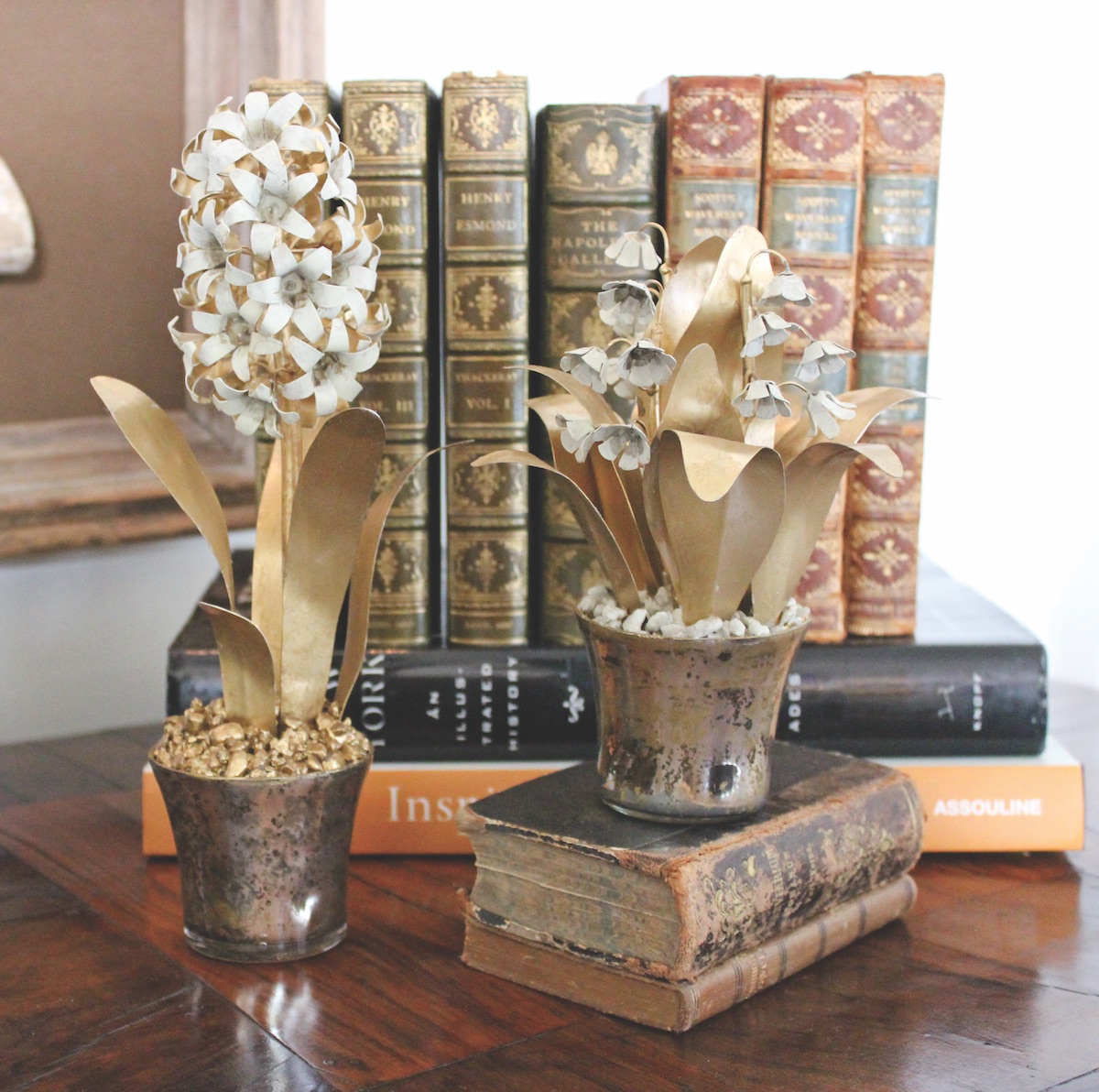
Tommy Mitchell crafts metal flowers and botanicals.
As a young boy, Tommy Mitchell helped out in the family garden. It wasn’t altruism, he quickly acknowledges; it was a requirement. Dad grew vegetables while Mom focused on flowers, and although Mitchell recalls a fascination with all of the natural forms sprouting up from the North Carolina dirt, he never imagined that familiarity with the curve of a watermelon vine would one day lead him to shape botanical objects that sprung from his own hands rather than the soil. Today, his refined metal plants—whether flowering or sans blooms, such as his interpretations of agaves, palms, and Brussels sprouts—are snapped up by arbiters of style including interior designer Bunny Williams, and sold in chic emporiums such as Bergdorf Goodman.

“My childhood was filled with flower gardens,” says artist Tommy Mitchell. His botanical sculptures, such as the hyacinth and lily of-the-valley shown above, now grace stylish interiors across the country. Photo courtesy of Tommy Mitchell
So create he now does, cutting waferthin sheets of brass, copper, and steel, and manipulating them to mimic the gentle bend of a leaf or the delicate curl of a flower petal. Once he captures the form, he adds paint to bring his plants to life, producing his own form of tole (gilded and painted metalware originally fashionable in the 18th century). Mitchell’s flowers suggest the gracefulness of the antiques but also have a modern perspective—not surprising since he counts among his favorite artists the French Nouveau Réalisme painter Yves Klein and American sculptor Alexander Calder.

A phalaenopsis orchid appears to have been touched by King Midas, but in reality was crafted from metal that was cut, shaped, and gilded by Tommy Mitchell. Photo by Briana Brough
Mitchell’s fan base of collectors continues to grow as quickly as weeds in the garden. In the design community, Glenn Lavinder, owner of Greensboro’s The Pink Door, was an early champion of the artist’s work. “And then a few years ago we had a show in New York, and the response was overwhelming,” Mitchell remembers.
Bergdorf’s took notice as did Williams, who now sells his tole works at Treillage, the Upper East Side Manhattan shop she cofounded with John Rosselli. Now, Mitchell continues to experiment with different techniques and finishes. For clients with a contemporary bent, he swathes his flowers and fruits in gold, giving the pieces a sleek, sculptural appearance. Lighting and furniture are now also part of the artist’s repertoire.
“I have 1,001 more ideas, but the challenge is finding the time to implement them all,” says Mitchell, adding that he is grateful his work is in demand. A recent commission that occupies his thoughts and hours as of late is perhaps the most monumental project to date—an enormous vertical tole vegetable garden that will climb a restaurant’s wall. It’s just further proof that a childhood spent digging in the earth can yield larger-than-life results.




